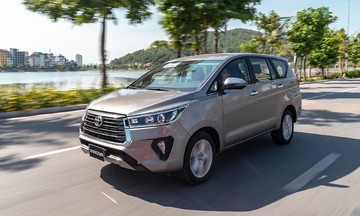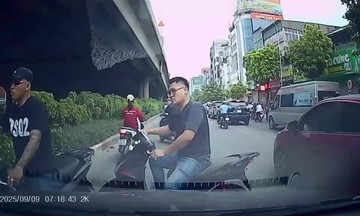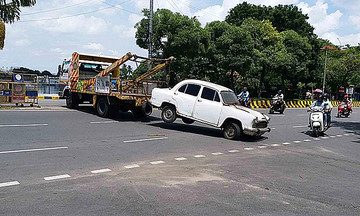Japan's Traffic Police Department recently proposed constructing simulated highways to provide learner drivers with a safe environment to practice highway driving, minimize disruption to other vehicles, and ensure road safety.
Driving test centers in Japan often incorporate highway-like scenarios into their courses. Some centers, such as the one in Oita prefecture, include merging, accelerating, and maintaining speed at higher speeds as part of the on-site testing process.
A microcosm of road situations
The on-site driving test in Japan begins even before the car doors are opened. Applicants must check under and around the car, carefully observing and confirming this with the examiner. Opening the door is a multi-step process: opening it slightly (10 cm), checking front and back again, and then fully opening the door to enter the vehicle.
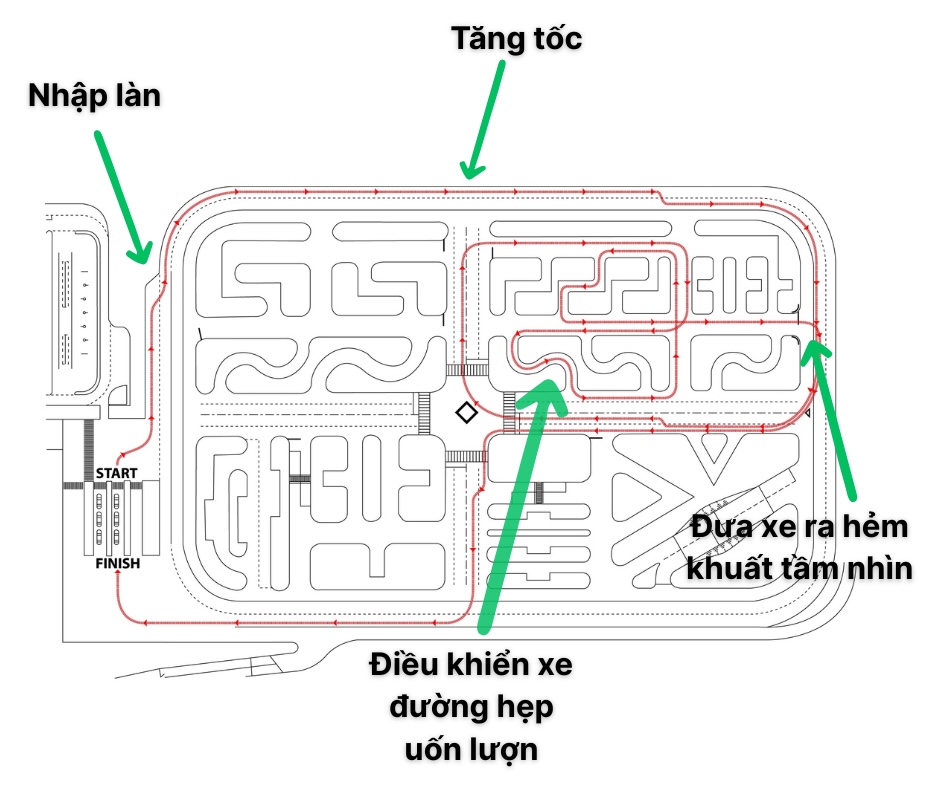 |
Diagram of the driving test course at the Oita Driver's License Center. Photo: Oita Department of Motor Vehicles |
Diagram of the driving test course at the Oita Driver's License Center. Photo: Oita Department of Motor Vehicles
The car starts on a side road, requiring the applicant to merge into the main lane. They must use their turn signal, check their mirrors, look over their shoulder to check blind spots, and then merge. This simulates entering a main road or highway from a smaller road. Missing any of these steps results in point deductions.
After merging, applicants enter a long straight section and are asked to accelerate to above 50 km/h. This section helps them get accustomed to driving at higher speeds, focusing on maintaining stability and handling speed. Specifically, at curves, applicants must decelerate on the straightaway before turning, not while steering. Braking during a turn is dangerous, especially at higher speeds, and can cause loss of control.
Next, applicants navigate an S-curve and a narrow perpendicular alley, honing precise steering in tight spaces and improving their sense of the vehicle's dimensions. This is followed by a simulated intersection with traffic lights, where using the turn signal, stopping at the correct line, and checking for cross-traffic even when the light is green, is mandatory. Finally, the test simulates obstructed visibility by a concrete wall, forcing applicants to inch forward, continually checking both sides before merging back into the main lane. This closely mirrors real-world scenarios of entering and exiting main roads on streets with numerous small alleys in Japan.
The Oita testing center's design tests not only basic driving skills, but also exposes applicants to potentially hazardous real-world situations, particularly high-speed driving and highway merging and exiting, all within a safe, controlled environment.
Variations among locations
While driving tests in Japan have nationally standardized requirements, course layouts and specific details may vary slightly between prefectures. This allows each testing center to present unique challenges while ensuring learners develop all essential skills before driving on public roads.
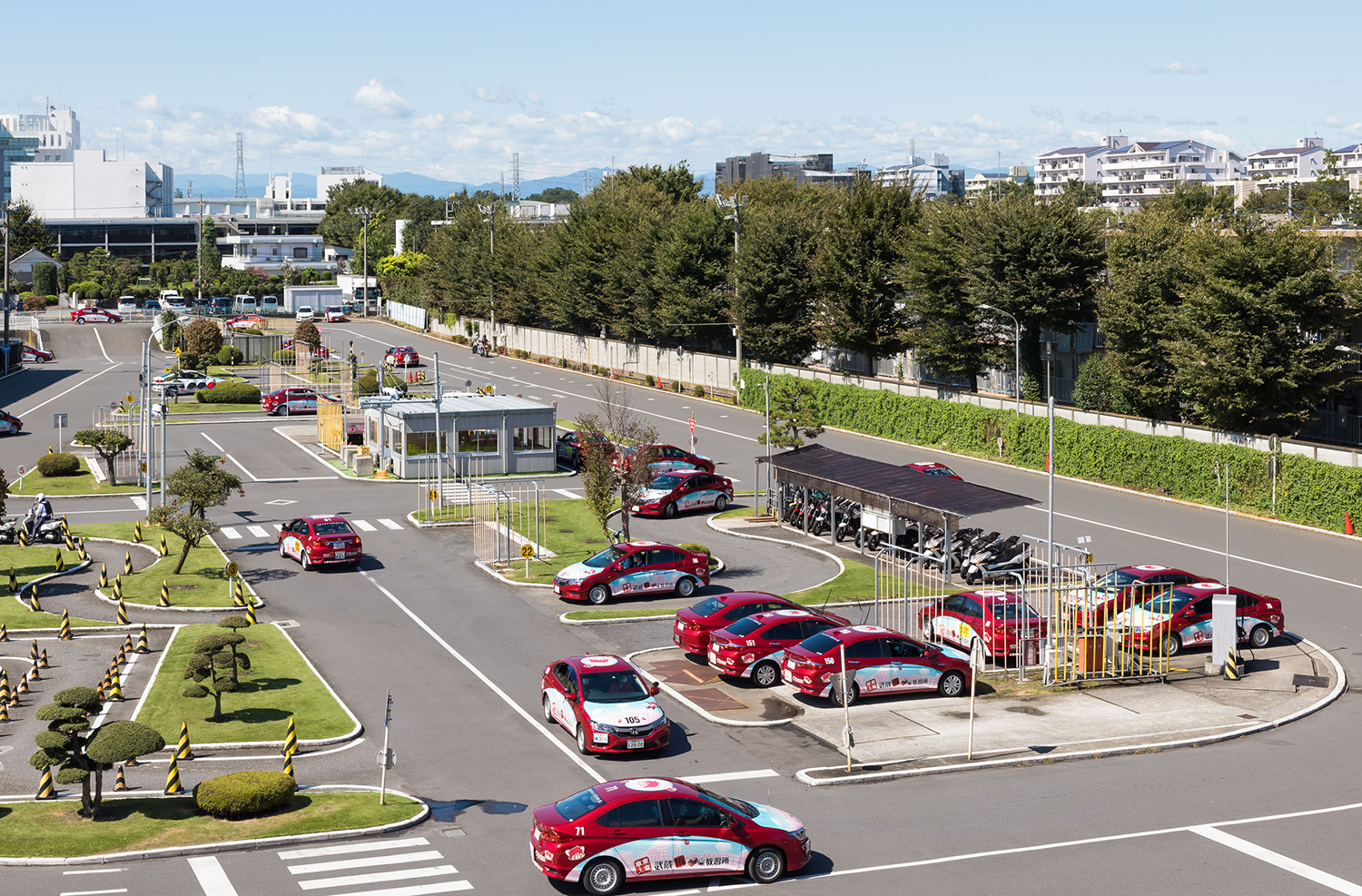 |
Musashisakai Driving School's driving course in Tokyo. Photo: Musashisakai Driving School |
Musashisakai Driving School's driving course in Tokyo. Photo: Musashisakai Driving School
In Japan, highway driving is a required part of the curriculum after mastering the test course, but it is not part of the official licensing exam. Applicants only need to pass the on-site test and a regular public road driving test to obtain their license. The public road test involves driving for 10-20 minutes around the testing center, through busy streets and intersections.
However, this early exposure to merging, maintaining high speeds, and handling highway situations prepares new drivers for real-world driving, making them more confident and safe.
Learner vehicles in Japan are clearly marked with signs saying "learning to drive" on the front and back, prompting other drivers to yield. The cars also have a secondary brake pedal, and some are equipped with extra mirrors for the instructor. This allows instructors to maintain control and ensure safety for both the learner and other road users, even during practice on busy streets or highways.
Ho Tan




